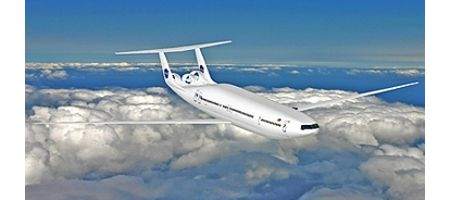An MIT-led team has designed a green airplane for NASA that should use 70 percent less fuel than current planes while also reducing noise and nitrogen oxide emissions.

The design has been presented to NASA as part of a $2.1 million research contract aimed at identifying key technologies, such as advanced airframe configurations and propulsion systems, that will enable greener airplanes to take flight around 2035.
The MIT team developed two designs: the 180-passenger D ‘double bubble’ series to replace the Boeing 737 class aircraft, and the 350 passenger H ‘hybrid wing body’ series to replace the 777 class aircraft now used for international flights.
Instead of using a single fuselage cylinder for the D series, the engineers used two partial cylinders placed side by side to create a wider structure.
They also moved the engines from the usual wing-mounted locations to the rear of the fuselage. Unlike most airplane engines, the D-series takes in slower moving air that is present in the wake of the fuselage. This allows the engines to use less fuel for the same amount of thrust – although the design has several practical drawbacks, such as creating more engine stress.
According to Mark Drela, lead designer of the D series, the design mitigates some of these problems by traveling about 10 percent slower than a 737. To further reduce the drag and fuel consumption, the D series features longer, skinnier wings and a smaller tail.
Independently, each tweak might not amount to much, but the “little five-percent changes add up to one big change,” Drela said.
Although the H series uses much of the same technology as the D series, a larger design was needed. The MIT team designed a triangular-shaped hybrid wing body aircraft that blends a wider fuselage with the wings for improved aerodyamics. The large center body creates a forward lift that eliminates the need for a tail to balance the aircraft.
The large structure also allows engineers to explore different propulsion architectures for the plane, such as a distributed system of multiple smaller engines.
The MIT team expects to hear from NASA within the next few months about whether it has been selected for the second phase of the program.






